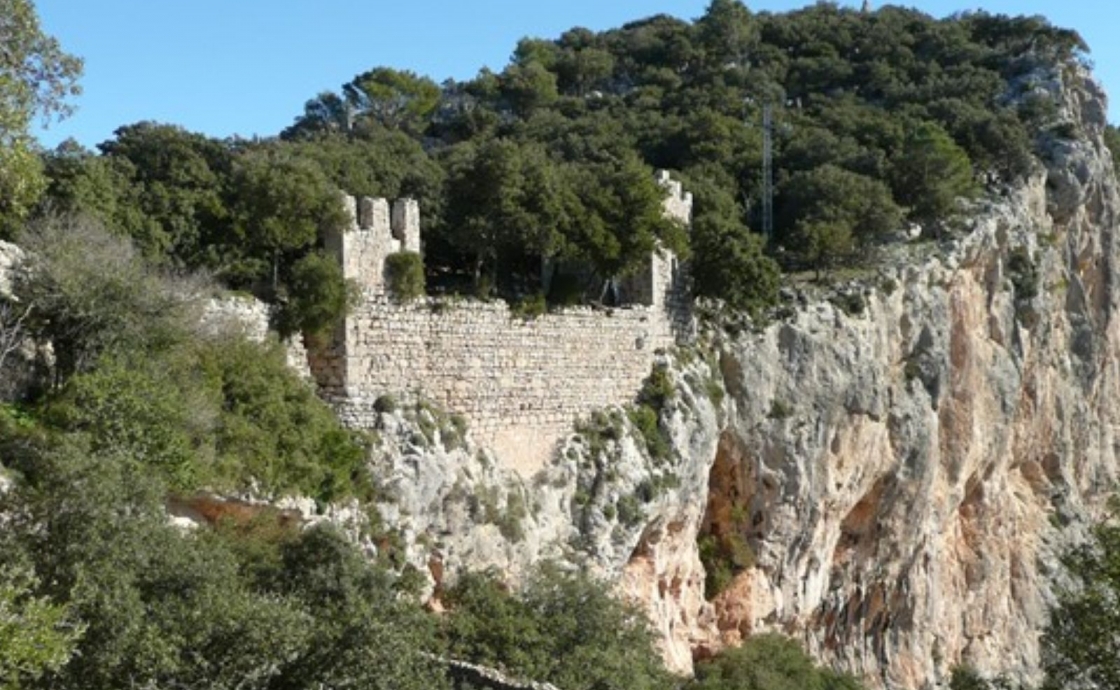
Explore the Castle of Alaró
The mountain of Alaró resembles a large mass of jagged rock. Its twin, Puig de Son Cadena, looks like a puzzle piece that has separated from its other half. Both mountains are similar and face each other, but Alaró boasts a rock castle, one of the three still existing in Mallorca, alongside Santueri in Felanitx and Rei in Pollença.
The ruins of the castle, which stand at 822 meters high, were once part of an impregnable fortress that protected the island’s inhabitants from pirate and enemy attacks.
History and Legends of the Castle of Alaró
In 902, the Muslim invasion of Mallorca took place. For eight years and six months, the Saracens attempted to invade the castle, break down its walls, and forcefully enter the fortress, all to no avail.
The Mallorcan Christians resisted as long as they could but eventually had to surrender due to the lack of food and drink.
Arab chronicles remember the heroic Mallorcans and the castle where they resisted the invader’s attack for so long.
In 1231, during the final phase of the Christian conquest of Mallorca by King Jaume I The Conqueror, the last Muslim inhabitants took refuge precisely in the three remaining rock castles on the island.
The conqueror's chronicle, called the Llibre dels Feits, explains that when Jaume I learned that the Kingdom of Tunis had abandoned any intention of reclaiming Mallorca, he planned and launched an attack against the Castle of Alaró, considered the strongest and most resilient in the kingdom.
Legend has it that the monarch rode his horse up to the very door of the fortress, located at the outer wall. When the Muslims defending the castle tried to capture him, the horse reared up, and as its hooves struck the stone, they left an everlasting imprint.
It is said that the orange hues of the cliff rocks, especially at sunset, are due to the blood of the Saracens, who were unable to withstand the conqueror’s troops.
Christians vs. Christians at the Castle of Alaró
History ebbs and flows and takes dramatic turns, which is what happened in 1286 when the castle became the scene of a siege once again, but this time it was Christians against Christians.
The Conqueror’s son, Jaume II, had detached the Kingdom of Mallorca from the Kingdom of Aragon, which displeased his nephew, Alfonso III, King of Aragon. Alfonso, undeterred, launched a conquest of Mallorca, and when he arrived at Alaró, he found Jaume II’s two captains, Guillem Cabrit and Guillem Bassa.
Both captains refused to surrender, and when Alfonso III discovered that one of them bore the surname Cabrit – meaning "kid" in Spanish – he swore to roast the rebels like kids.
When the fortress finally fell, the captains met this cruel fate in the square of Alaró, becoming heroes whose memory lives on in the town and throughout Mallorca.
The hike to the Castle of Alaró is one of the most popular on the island. There are several starting points, but one of the most popular is Es Verger, from where you can follow the stone path up the mountain to the ruins of the fortress.




